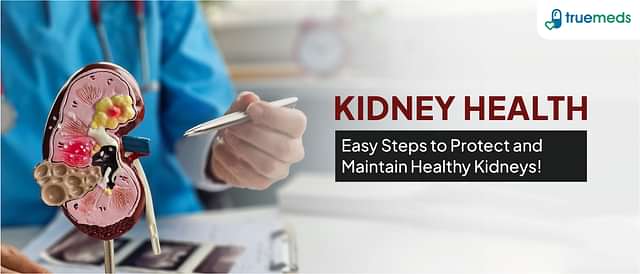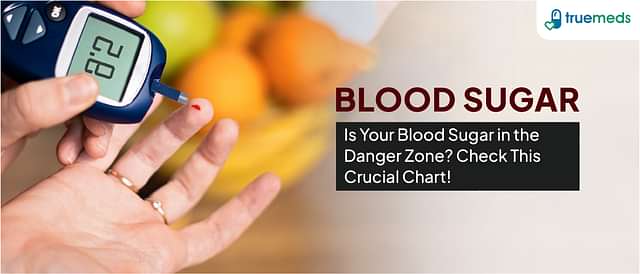Congenital Heart Disease
Congenital heart disease (CHD) is a group of abnormalities in the heart's structure that are present at birth. These defects occur when the heart or blood vessels don't form correctly during foetal development, leading to various problems that can affect the proper flow of blood and oxygen to the lungs and the body. CHD can range from simple issues, such as holes between heart chambers, to severe malformations, like the absence of one or more chambers or valves.
Last updated on : 27 Jun, 2025
Read time : 18 mins

Overview of Disease
Congenital heart disease (CHD) encompasses various structural problems with the heart that are present at birth. These abnormalities arise when the heart or blood vessels fail to form correctly during foetal development, which can affect the normal functioning of the heart. In this article, we will explore the different aspects of congenital heart disease, including its causes, symptoms, types, and treatment options.
What is Congenital Heart Disease?
Congenital heart disease (CHD) refers to a group of heart defects that are present at birth. These defects occur when the heart or blood vessels near the heart do not develop normally during foetal development. CHD can affect various parts of the heart, such as the heart walls (septum), valves, or blood vessels, leading to disrupted blood flow and potential complications. The severity of CHD can range from minor defects that may not require treatment to complex conditions that necessitate immediate medical intervention. While some congenital heart defects may be detected during pregnancy or shortly after birth, others may not be diagnosed until adulthood.
Key Factors about Congenital Heart Disease
| Category | Details |
| Also Referred as | Congenital Heart Defects (CHDs), Congenital Heart Disease (CHD) |
| Commonly Occurs In | At birth, but symptoms may appear later in life |
| Affected Organ | Heart, including chambers, valves, and large blood vessels |
| Type | Septal defects, Heart valve defects, Defects in large blood vessels |
| Common Signs | Irregular heartbeats, Blue or grey skin, Shortness of breath, Fatigue |
| Consulting Specialist | Paediatric Cardiologist, Adult Cardiologist, Cardiothoracic Surgeon |
| Treatement Procedures | Cardiac catheterisation, Surgery, Medicines |
| Managed By | Diuretics (e.g., furosemide), beta-blockers (e.g., metoprolol) and anticoagulants (e.g., warfarin, aspirin) |
| Mimiciking Condition | Heart murmurs, arrhythmias, endocarditis |
Types of Congenital Heart Disease
There are several types of congenital heart diseases, each with varying degrees of severity and impact on the circulatory system. Here are some of the common types:
Aortic valve stenosis (AVS): This condition involves the narrowing of the aortic valve, which controls the flow of blood from the heart to the rest of the body. AVS can lead to reduced blood flow and increased strain on the heart.
Coarctation of the aorta (CoA): This defect involves the narrowing of the aorta, the main artery that carries blood from the heart to the rest of the body. CoA can cause high blood pressure in the upper body and reduced blood flow to the lower body.
Ebstein's anomaly: This congenital heart defect involves the abnormal formation of the tricuspid valve and the right ventricle, leading to inadequate blood flow to the lungs. Symptoms may include cyanosis (bluish discolouration of the skin), fatigue, and shortness of breath.
Patent ductus arteriosus (PDA): This condition occurs when the ductus arteriosus, a blood vessel that connects the aorta and pulmonary artery in the foetus, fails to close after birth, leading to excessive blood flow to the lungs. PDA can cause heart failure and pulmonary hypertension if left untreated.
Pulmonary valve stenosis: This condition involves the narrowing of the pulmonary valve, which controls the flow of blood from the heart to the lungs. Pulmonary valve stenosis can cause reduced blood flow to the lungs and increased strain on the right ventricle.
Septal defects: These defects involve holes in the septum, the wall of tissue that separates the heart's chambers, leading to abnormal blood flow between the chambers. The most common types are atrial septal defect (ASD) and ventricular septal defect (VSD).
Single ventricle defects: These defects involve the underdevelopment of one of the heart's ventricles, leading to inadequate blood flow to the lungs and the rest of the body. Examples include hypoplastic left heart syndrome (HLHS) and tricuspid atresia.
Tetralogy of fallot: This congenital heart defect involves four components: a ventricular septal defect, pulmonary stenosis, right ventricular hypertrophy, and an overriding aorta. Symptoms may include cyanosis, shortness of breath, and fainting.
Total (or partial) anomalous pulmonary venous connection (TAPVC): This condition occurs when the pulmonary veins, which carry oxygenated blood from the lungs to the heart, are connected to the right atrium instead of the left atrium. TAPVC can lead to the mixing of oxygenated and deoxygenated blood, causing cyanosis and heart failure.
Symptoms of Congenital Heart Disease
The symptoms of congenital heart disease can manifest differently depending on the type and severity of the defect. Some common signs and symptoms to look out for include:
Irregular heartbeats (arrhythmias): Abnormal heart rhythms that can be detected through an electrocardiogram (ECG).
Cyanosis: A bluish or greyish discolouration of the skin, lips, and fingernails due to low oxygen levels in the blood, particularly noticeable in cyanotic CHD.
Shortness of breath: Difficulty breathing, especially during feeding in infants, which can lead to poor weight gain.
Fatigue: Easily getting tired during physical activity or exercise, more commonly observed in older children and adults with CHD.
Swelling (oedema): Accumulation of fluid in body tissues, causing swelling in the legs, abdomen, or areas around the eyes.
Stages of Congenital Heart Disease
Congestive heart failure progresses through four stages (A, B, C, and D), from high-risk to advanced heart failure. These include:
Stage A: Individuals are at high risk for developing heart failure but show no symptoms. Risk factors include hypertension, diabetes, coronary artery disease, metabolic syndrome, alcohol use disorder, a history of rheumatic fever, and exposure to certain cardiotoxic medications (such as doxorubicin).
Stage B: The left ventricle is structurally abnormal or not functioning well, but the individual has not yet experienced symptoms of heart failure.
Stage C: Patients are diagnosed with congestive heart failure and currently show or have previously had symptoms such as fatigue and shortness of breath.
Stage D: This final stage involves advanced heart failure with reduced ejection fraction (HFrEF), where severe symptoms persist despite treatment, requiring intensive management.
Causes of Congenital Heart Disease
The various factors that can increase the likelihood of developing CHD include:
Genetic factors: A family history of heart defects may indicate a genetic predisposition. Certain genetic syndromes, such as Down syndrome, are associated with a higher incidence of congenital heart disease.
Maternal health conditions: Preexisting medical conditions in the mother, such as diabetes, lupus, or phenylketonuria (PKU), can increase the likelihood of CHD in the baby.
Maternal infections: Exposure to certain viral infections like rubella (German measles) during pregnancy can affect heart development in the foetus.
Medications and substances: The use of certain medications (such as valproate, carbamazepine and isotretinoin) and alcohol during pregnancy may disrupt normal heart formation.
Environmental factors: Exposure to chemicals or radiation during critical periods of foetal development can potentially contribute to the development of CHD.
Risk Factors
Several risk factors can increase the likelihood of a baby being born with congenital heart disease (CHD), including:
Maternal diabetes, particularly type 1 and type 2 diabetes
Genetic conditions such as Down syndrome, Turner syndrome, and Noonan syndrome
Rubella infection during pregnancy, especially during the first trimester
Consumption of alcohol and smoking during pregnancy
Certain medications taken during pregnancy, such as lithium and isotretinoin
Antenatal febrile illness
Advanced maternal and paternal age
Previous complications during pregnancy or a history of stillbirths/abortions
Complications
Congenital heart disease can lead to various complications that may have a lasting impact on a child's health and development. Some of the most common complications include:
Congestive heart failure: Severe congenital heart defects can cause the heart to work harder, leading to congestive heart failure. Symptoms may include rapid breathing, poor weight gain, and fatigue.
Endocarditis: Children with CHD are at a higher risk of developing endocarditis, an infection of the heart lining and valves. This condition can be life-threatening if not treated promptly with antibiotics.
Pulmonary hypertension: Some congenital heart defects can cause increased blood flow to the lungs, leading to pulmonary hypertension. This condition can cause shortness of breath, fatigue, and chest pain.
Arrhythmias: Abnormal heart rhythms, or arrhythmias, can occur in children with CHD due to the structural changes in the heart.
Developmental delays: Children with congenital heart disease may experience developmental delays in areas such as growth, motor skills, and cognitive function.
Neurodevelopmental disorders: Some children with CHD may be at a higher risk for neurodevelopmental disorders, such as attention deficit hyperactivity disorder (ADHD) or learning disabilities.
Prevention of Congenital Heart Disease
While not all cases of congenital heart disease can be prevented, there are several steps that prospective parents can take to reduce the risk of their child developing a congenital heart defect. These include:
Preconception care: Women planning to become pregnant should consult with their doctor to discuss any pre-existing health conditions, such as diabetes, and ensure that they are well-controlled before conception.
Prenatal vitamins: Taking prenatal vitamins containing folic acid before and during pregnancy can help reduce the risk of certain congenital heart defects, as well as other birth defects like spina bifida.
Avoid teratogens: Pregnant women should avoid exposure to known teratogens, such as alcohol, tobacco, and certain medications, which can increase the risk of congenital heart defects and other birth defects.
Manage chronic conditions: Women with chronic health conditions, such as diabetes or hypertension, should work closely with their doctor to manage these conditions throughout pregnancy, as poorly controlled chronic diseases can increase the risk of CHD.
Prenatal screening: Regular prenatal check-ups and screenings, such as ultrasounds and foetal echocardiography, can help detect congenital heart defects early in pregnancy, allowing for better preparation and management of the condition.
Genetic counselling: Families with a history of congenital heart disease or other genetic disorders may benefit from genetic counselling to understand their risk and make informed decisions about family planning.
Diagnosis & Tests
Diagnosing congenital heart disease involves a combination of physical examinations, imaging studies, and other diagnostic tests. The following are some of the most common methods used to diagnose CHD:
Physical examination: A thorough physical examination, including listening to the heart and lungs, can help detect signs of congenital heart disease, such as a heart murmur or abnormal pulse.
Pulse oximetry screening: This non-invasive test measures the oxygen saturation in a newborn's blood and can help identify some critical congenital heart defects that may not be apparent during a physical examination.
Echocardiogram: An echocardiogram is an ultrasound of the heart that allows healthcare professionals to visualise the heart's structure and function. This test can help diagnose most congenital heart defects and guide treatment decisions.
Electrocardiogram (ECG): An ECG records the heart's electrical activity and can help detect abnormal heart rhythms or other signs of congenital heart disease.
Chest X-ray: A chest X-ray can show the heart's size and shape and help identify any changes in the lungs that may be related to congenital heart disease.
Cardiac catheterization: In some cases, a thin tube called a catheter may be inserted into the heart through a blood vessel to measure pressure and oxygen levels and to visualise the heart's structure more clearly.
Magnetic resonance imaging (MRI): Cardiac MRI can provide detailed images of the heart and surrounding blood vessels, helping to diagnose complex congenital heart defects.
Treatment & Management
The treatment of congenital heart disease (CHD) depends on the type, complexity, and severity of the defect, as well as the patient’s age, symptoms, and overall health. Management may involve medications, minimally invasive procedures, surgery, or lifelong monitoring. The goal is to improve heart function, relieve symptoms, prevent complications, and support normal development.
1. Medications
Medications are often used to manage symptoms, prevent complications, and support heart function. These may include:
- Diuretics
- Furosemide: A loop diuretic that helps remove excess fluid from the body, reducing the workload on the heart and relieving symptoms of fluid overload in children with congenital heart disease.
- Spironolactone: A potassium-sparing diuretic used to manage fluid retention and reduce heart strain, especially in cases of heart failure associated with congenital defects.
- Bumetanide: A potent loop diuretic that assists in managing severe fluid retention and pulmonary congestion in congenital heart disease.
- ACE Inhibitors / ARBs
- Enalapril: An ACE inhibitor that helps lower blood pressure and reduce the heart’s workload by relaxing blood vessels, commonly used in heart failure management in congenital heart defects.
- Captopril: An ACE inhibitor used to manage hypertension and heart failure symptoms in children with congenital heart disease by improving blood flow and reducing cardiac stress.
- Lisinopril: Another ACE inhibitor that lowers blood pressure and supports heart function in children with congenital structural abnormalities.
- Losartan: An ARB (angiotensin II receptor blocker) used as an alternative to ACE inhibitors to control blood pressure and reduce afterload in congenital heart disease.
- Beta-blockers
- Metoprolol: A beta-blocker that slows the heart rate and reduces blood pressure, helping manage arrhythmias and improve heart function in congenital heart defects.
- Propranolol: A non-selective beta-blocker often used in congenital heart disease with associated arrhythmias or cyanotic spells, especially in conditions like Tetralogy of Fallot.
- Carvedilol: A beta-blocker with additional alpha-blocking effects, used to manage heart failure symptoms and improve cardiac output in complex congenital heart disease.
- Atenolol: A cardioselective beta-blocker that helps manage high blood pressure and control abnormal heart rhythms in congenital heart conditions.
- Cardiac glycosides
- Digoxin: This cardiac glycoside strengthens heart contractions and is particularly helpful in managing heart failure symptoms in children with congenital heart defects.
- Anticoagulants / Antiplatelets
- Warfarin: An anticoagulant used to prevent blood clots in patients with congenital heart disease who are at risk of stroke or have undergone valve replacement.
- Aspirin: An antiplatelet agent that reduces the risk of clot formation, often used post-surgery or in patients with shunts or prosthetic devices.
- Clopidogrel: An antiplatelet drug used in children with stents or complex congenital heart disease to prevent thrombotic events.
- Rivaroxaban: An oral anticoagulant used in selected cases to prevent blood clots, especially when long-term anticoagulation is indicated.
- Dabigatran: A direct thrombin inhibitor used in certain congenital heart disease patients as an alternative to warfarin for clot prevention.
- Pulmonary vasodilators
- Sildenafil: A pulmonary vasodilator used in children with congenital heart disease and associated pulmonary hypertension to improve oxygenation and reduce pressure in lung arteries.
- Bosentan: An endothelin receptor antagonist used to manage pulmonary arterial hypertension in congenital heart defects, improving exercise capacity and symptoms.
- Tadalafil: A long-acting pulmonary vasodilator used in congenital heart disease with pulmonary hypertension to improve blood flow in the lungs and reduce cardiac workload.
2. Catheter-Based Procedures
Minimally invasive catheter interventions can correct certain defects without the need for open-heart surgery. These include:
- Balloon angioplasty: To widen narrowed arteries or valves.
- Balloon valvuloplasty: Used for pulmonary or aortic valve stenosis.
- Device closure: For septal defects like atrial septal defect (ASD) or patent ductus arteriosus (PDA) using occluder devices (e.g. Amplatzer septal occluder).
3. Surgery
Open-heart surgery may be required to repair or reconstruct defective heart structures. Common procedures include:
- Septal defect repair (e.g., closing a hole between chambers like ASD).
- Arterial switch operation: For transposition of the great arteries.
- Tetralogy of Fallot repair: Corrects all four components of the defect.
- Norwood, Glenn, and Fontan procedures: For complex single-ventricle heart defects.
- Valve repair or replacement, and reconstruction of blood vessels.
4. Heart Transplant
In severe, life-threatening cases of CHD where repair is not feasible or the heart has failed beyond function, heart transplantation may be the last resort.
5. Ongoing Management & Monitoring
- Regular cardiac check-ups to monitor heart function and growth.
- In some cases, endocarditis prophylaxis involves administering antibiotics prior to dental or surgical procedures.
- Psychosocial support, nutritional counselling, and exercise guidance are often part of a multidisciplinary care plan.
Living with Disease
Living with congenital heart disease involves several key considerations, including:
Adults with congenital heart disease need lifelong follow-up care with a cardiologist trained in treating adults with these conditions.
Patients should be aware of the signs and symptoms of congenital heart defects to watch for and know when to contact their healthcare team.
Participating in cardiac rehabilitation programs can help regain strength and reduce the risk of future heart problems.
Taking antibiotics before dental work or surgery can prevent endocarditis, a serious infection of the heart's inner lining.
Staying up-to-date on flu and pneumonia vaccinations is crucial for individuals with congenital heart disease.
When to See a Doctor?
If you or your child experiences any signs or symptoms of congenital heart disease, it is essential to consult a doctor promptly. Some common symptoms that warrant medical attention include:
Shortness of breath, especially during physical activity or at rest
Fatigue or tiring easily during physical activity
Swelling in the ankles, feet, or abdomen
Heart palpitations or irregular heartbeats
Chest pain or discomfort
Fainting or dizziness
Bluish discolouration of the skin, lips, or fingernails (cyanosis)
In some cases, congenital heart defects may not cause noticeable symptoms until adulthood. Adults who have been diagnosed with a congenital heart defect should maintain regular check-ups with a cardiologist specialising in adult congenital heart disease to monitor their condition and address any potential complications.
Key Takeaways
Congenital heart disease refers to a range of heart defects present at birth, affecting the heart's structure and function.
Common types of congenital heart defects include ventricular septal defect, atrial septal defect, tetralogy of Fallot, and patent ductus arteriosus.
Symptoms of congenital heart disease may include shortness of breath, fatigue, swelling, heart palpitations, chest pain, fainting, and cyanosis.
Treatment for congenital heart disease depends on the type and severity of the defect and may include medications, surgical interventions, catheter-based procedures, or lifestyle modifications.
Regular monitoring, symptom awareness, cardiac rehabilitation, infection prevention, and staying up-to-date on vaccinations are essential for individuals living with congenital heart disease.
If you or your child experiences symptoms of congenital heart disease, consult a doctor promptly for proper diagnosis and treatment.
FAQs
Is congenital heart disease for life?
Congenital heart disease is a lifelong condition that is present from birth and requires ongoing management and care.
Can I live a normal life with congenital heart disease (CHD)?
Most people with congenital heart disease (CHD) can have relatively normal and fulfilling lives, although this depends on the defect's severity and type.
Can you recover from congenital heart disease?
Complete recovery from congenital heart disease (CHD) is not always possible, as it often necessitates lifelong management, including treatments like surgery and medications.
How are the congenital heart defects grouped?
Congenital heart defects are grouped based on severity and blood flow impact, including cyanotic (low oxygen levels) and non-cyanotic defects.
Does congenital heart disease (CHD) need surgery?
The need for surgery depends on the defect's severity and type; some cases may be managed with medications or other interventions.
What age is at risk for congenital heart disease (CHD)?
Infancy is the primary risk period for congenital heart disease (CHD), as these defects are present at birth, but symptoms may appear later in life.
Is congenital heart disease (CHD) curable?
While congenital heart disease (CHD) may not always be curable, it can be effectively managed and treated through surgery, monitoring, and ongoing care.
How long do babies with congenital heart disease (CHD) live?
Advances in medical care have significantly improved survival rates, with many individuals living well into adulthood.
Can congenital heart disease cause death?
Severe congenital heart disease can lead to life-threatening complications, but early detection and proper treatment can significantly improve outcomes and reduce mortality risk.
How to avoid congenital heart disease?
While some risk factors are uncontrollable, maintaining a healthy lifestyle during pregnancy, including proper nutrition and prenatal care, can help reduce congenital heart disease risk.
References
Centers for Disease Control and Prevention. (2022, November 17). Congenital heart defects. https://www.cdc.gov/heart-defects/index.html
Johns Hopkins Medicine. (n.d.). Congenital heart defects (CHD). https://www.hopkinsmedicine.org/health/conditions-and-diseases/congenital-heart-defects
National Heart, Lung, and Blood Institute. (n.d.). Congenital heart defects. https://www.nhlbi.nih.gov/health-topics/congenital-heart-defects
MedlinePlus. (2022). Congenital heart defects. https://medlineplus.gov/congenitalheartdefects.html
NHS. (2018). Types of congenital heart disease. https://www.nhs.uk/conditions/congenital-heart-disease/types/
Browse Other Conditions
Latest health articles
Top Health Essentials
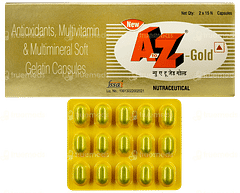


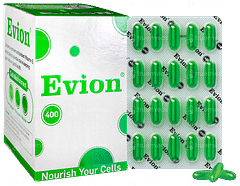
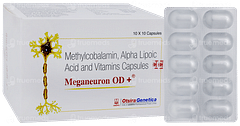








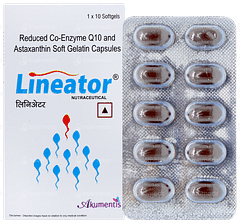


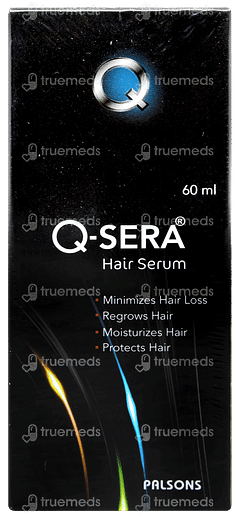



Disclaimer
Top-Selling Medicines:
...View more
Top-OTC medicines:
...View more
Company
About UsHealth ArticleHealth StoriesHealth LibraryDiseases & Health ConditionsAyurvedaUnderstanding Generic MedicinesAll MedicinesAll BrandsNeed HelpFAQSecuritySubscribe
Registered Office Address
Grievance Officer
Download Truemeds
Contact Us
Our customer representative team is available 7 days a week from 9 am - 9 pm.
v4.11.0
2026 - Truemeds | All rights reserved. Our content is for informational purposes only. See additional information.
Our Payment Partners














